
Key Points
- Early Signs of Improvement in NASDAQ’s Advance/Decline Line
- Small Increase in New NYSE Lows
- NYSE Trend Metrics Fade from Resistance
- S&P 500 Breadth Data Weakens, but Higher Lows Remain for Now
- Small Cap Metrics Take the Biggest Hit
Chart in Focus
The NASDAQ Composite Index is on the verge of trading to a record high and its Advance/Decline Line may be in the early stages of a reversal. The A/D Line failed to make a lower low with price in September and we are now looking for this indicator to make a higher high, to signal that a reversal is in fact, underway.
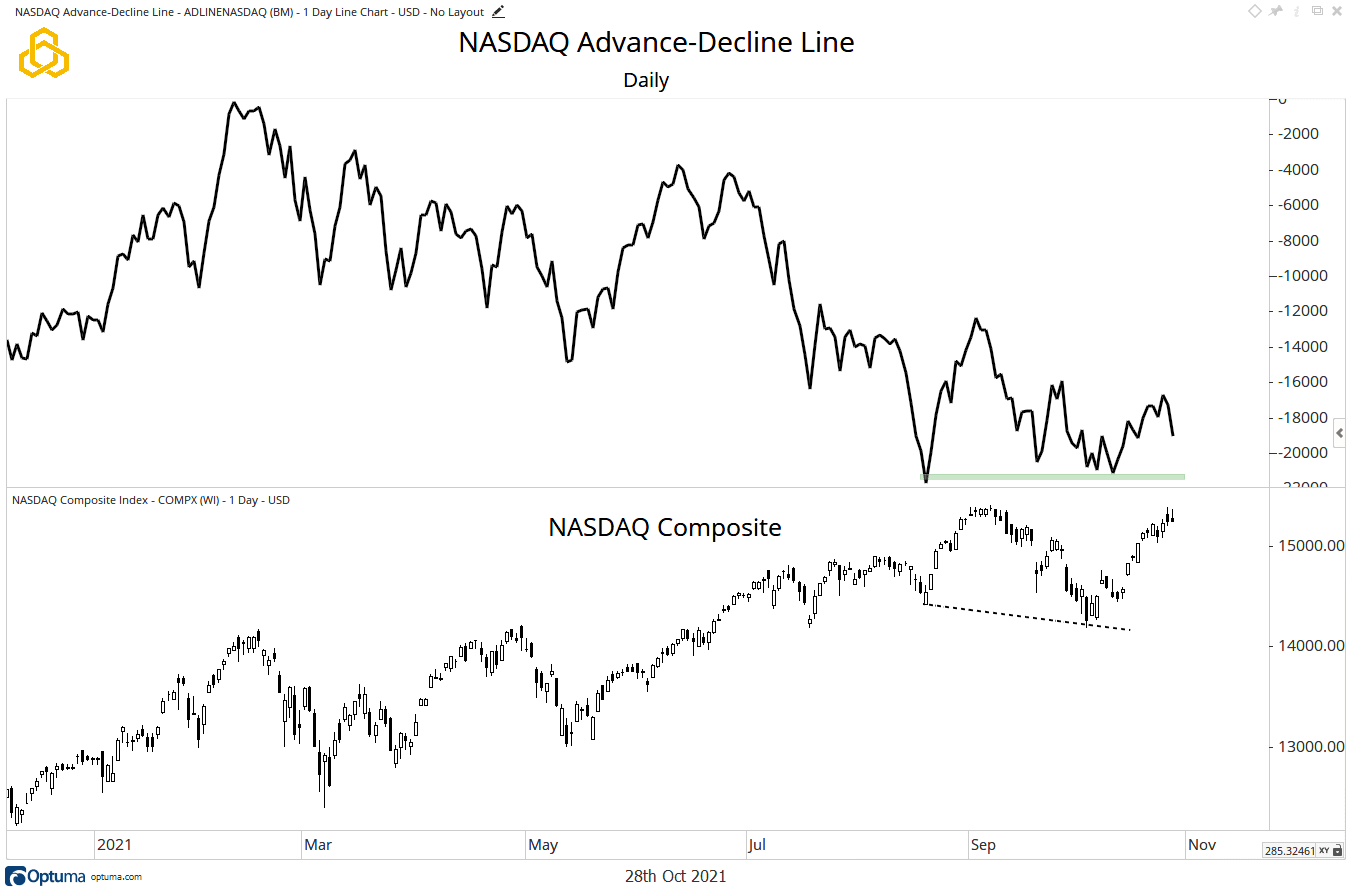
NYSE Breadth
The NYSE Advance/Decline Line has checked back to the broken trend line while remaining above the 50-day moving average which has made a turn higher. The break of the trend line that preceded a move to new highs for the S&P 500 remains in place for now. Bullish investors want to see this metric improve after a brief two-day dip while the index holds its 50-day moving average.
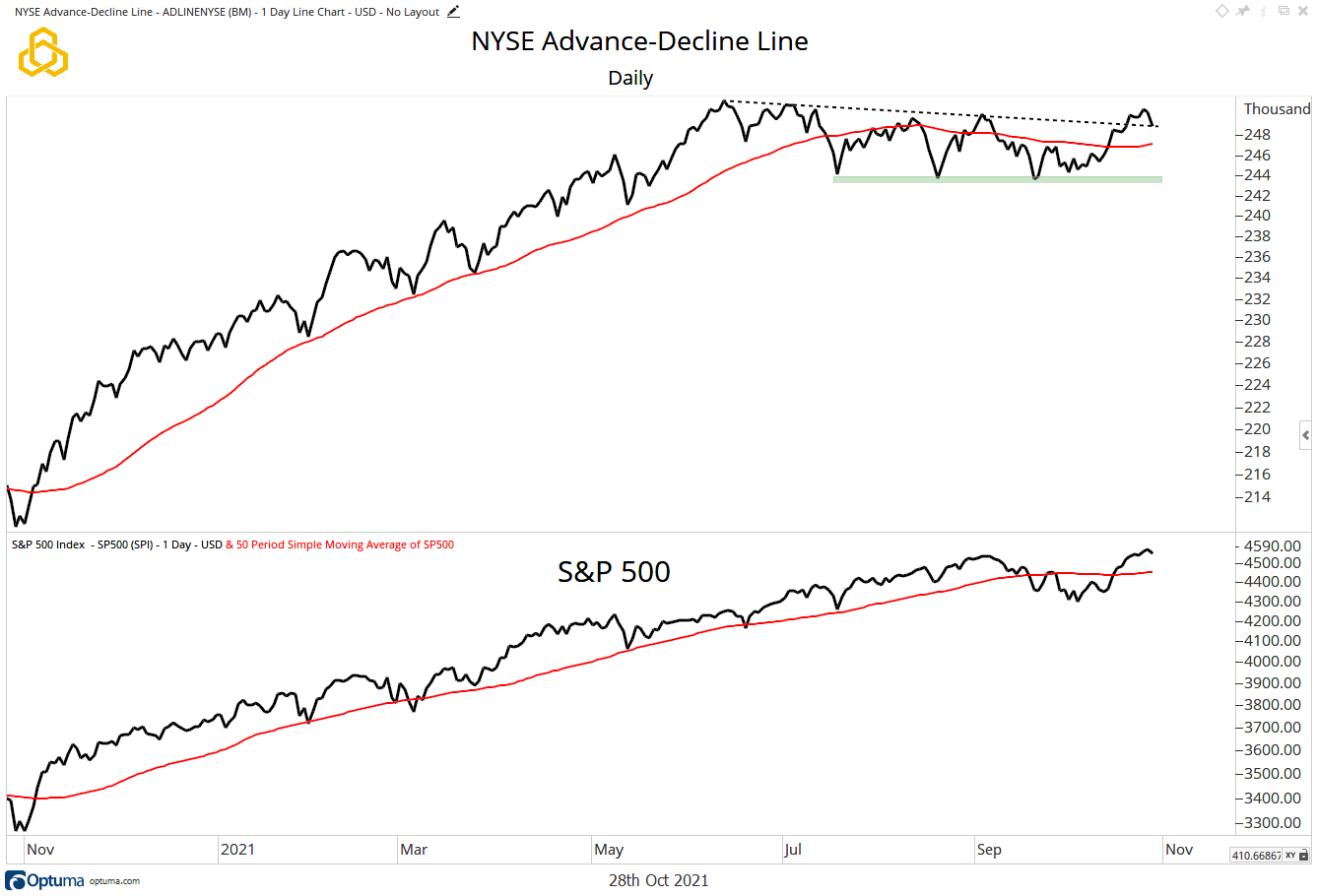
The NYSE’s Advance-Declining Volume Line remains above the 50-day moving average and is holding the short-term breakout level for now. Holding this level and moving to new highs will be a key development for stocks to move higher into the end of the year, following the breakout for the S&P 500.
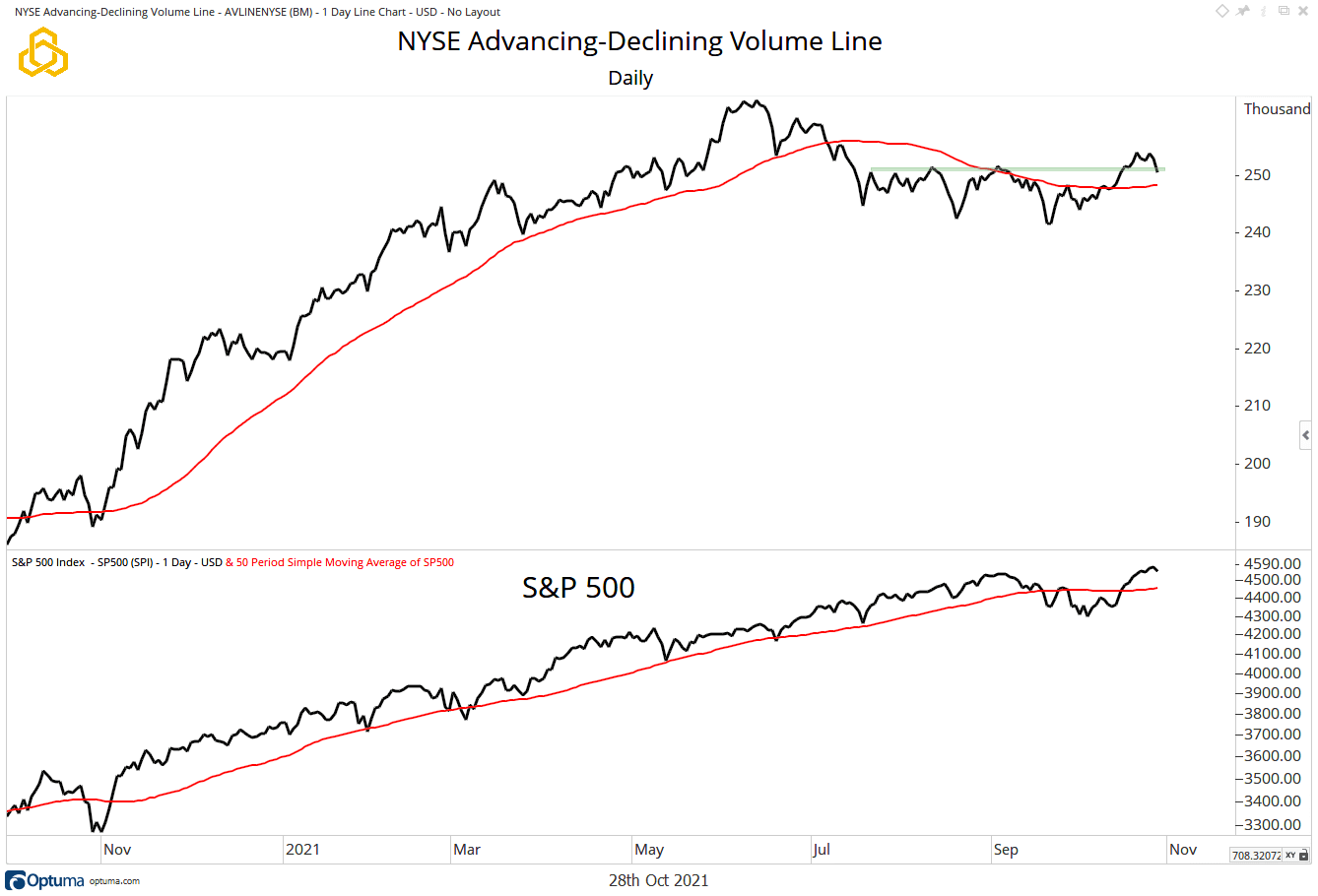
The 5-day moving averages of issues on the NYSE making new 52-week and six-month lows have seen a slight uptick over the past week. While this has certainly caught our attention, these metrics continue to fail to produce the types of build-ups that signal that a more pronounced decline for the overall equity market is at hand.
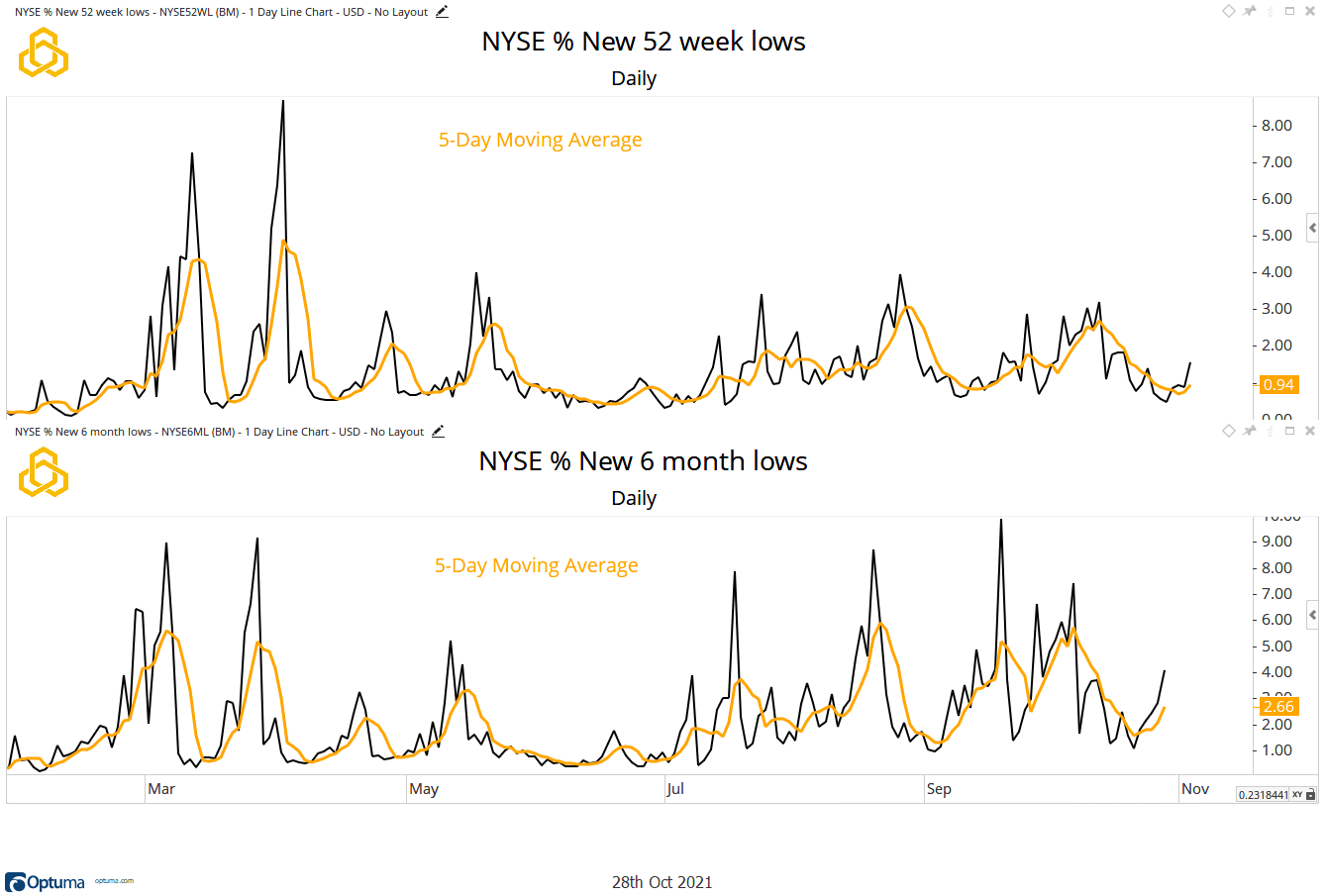
While new lows are showing a slight increase, new highs are showing a near-term decline. The trend since early September remains to the upside. We want to see the early September peak breached to the upside to lend another level of confirmation to the bullish trend in equity prices.
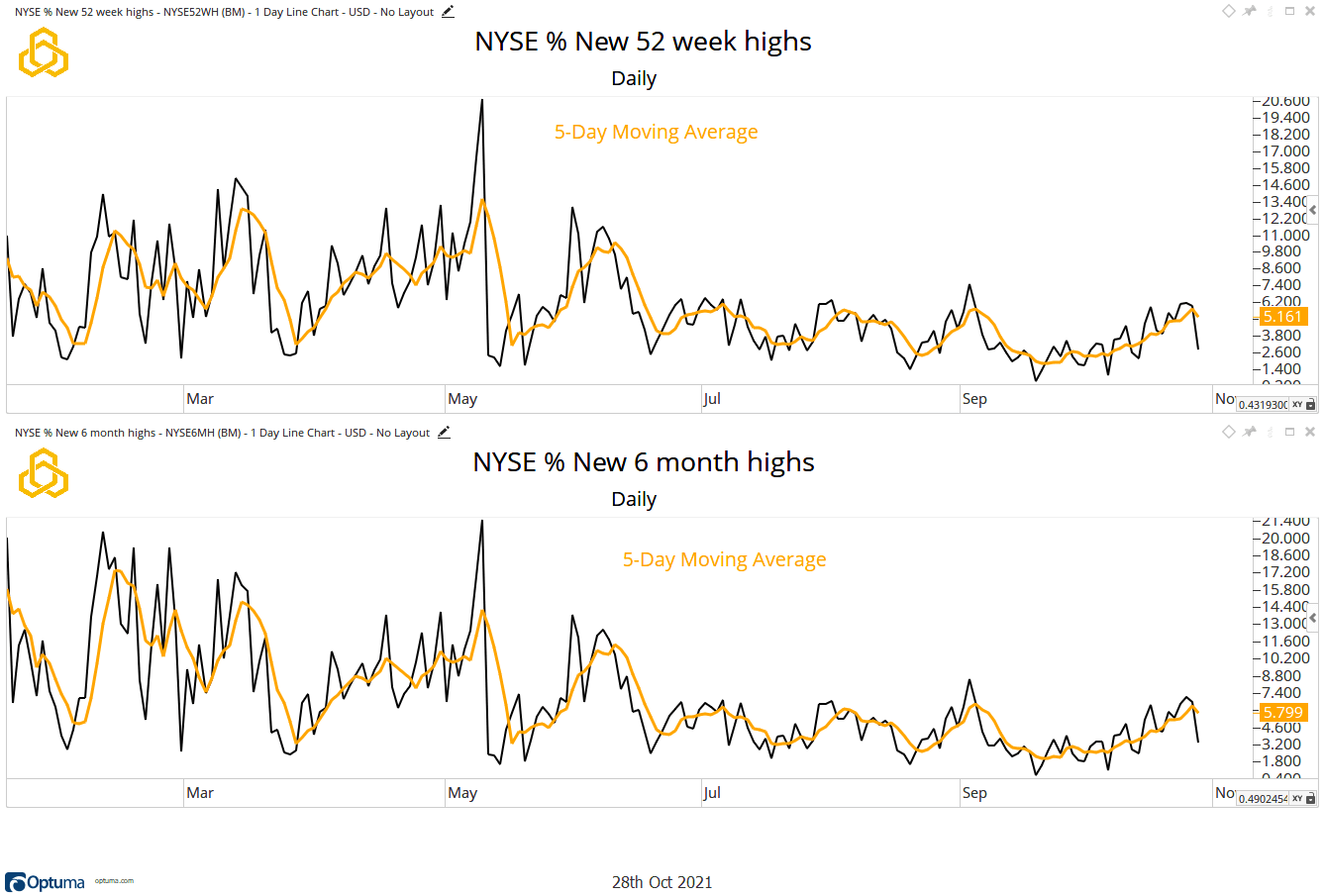
When looking at the percentage of stocks on the NYSE that are trading above their respective 200-day moving averages, there are two arguments that can be made after a downtick this week. Bears will point out that the downtrend from the November 2020 highs continues to play out. Bulls will make the case that the pace of that downtrend is diminishing, and that this indicator is in the early stages of a trend reversal. Both arguments are correct, and the onus is on the bulls to push this metric above near-term resistance before the case can be made that longer-term breadth is improving.
The index remains above the rising 200-day moving average.
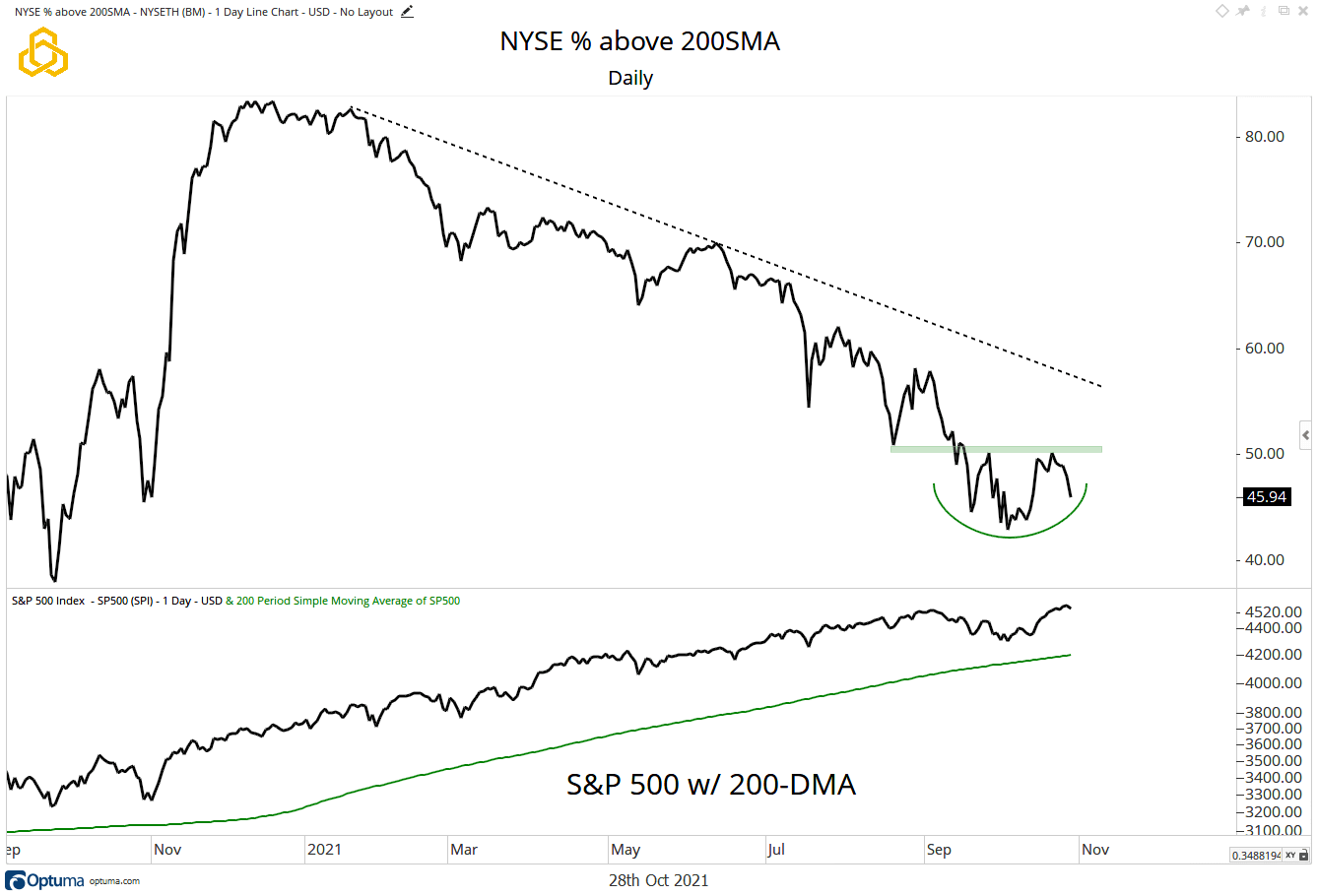
The percentage of issues on the NYSE trading above their 50-day moving averages moved from 56% to 52% this week and is testing the downtrend line from the November 2020 highs as the S&P 500 holds its 50-day moving average. Equity bulls want to see this trend line broken and the metric move above the 60% level to bolster equity price strength.
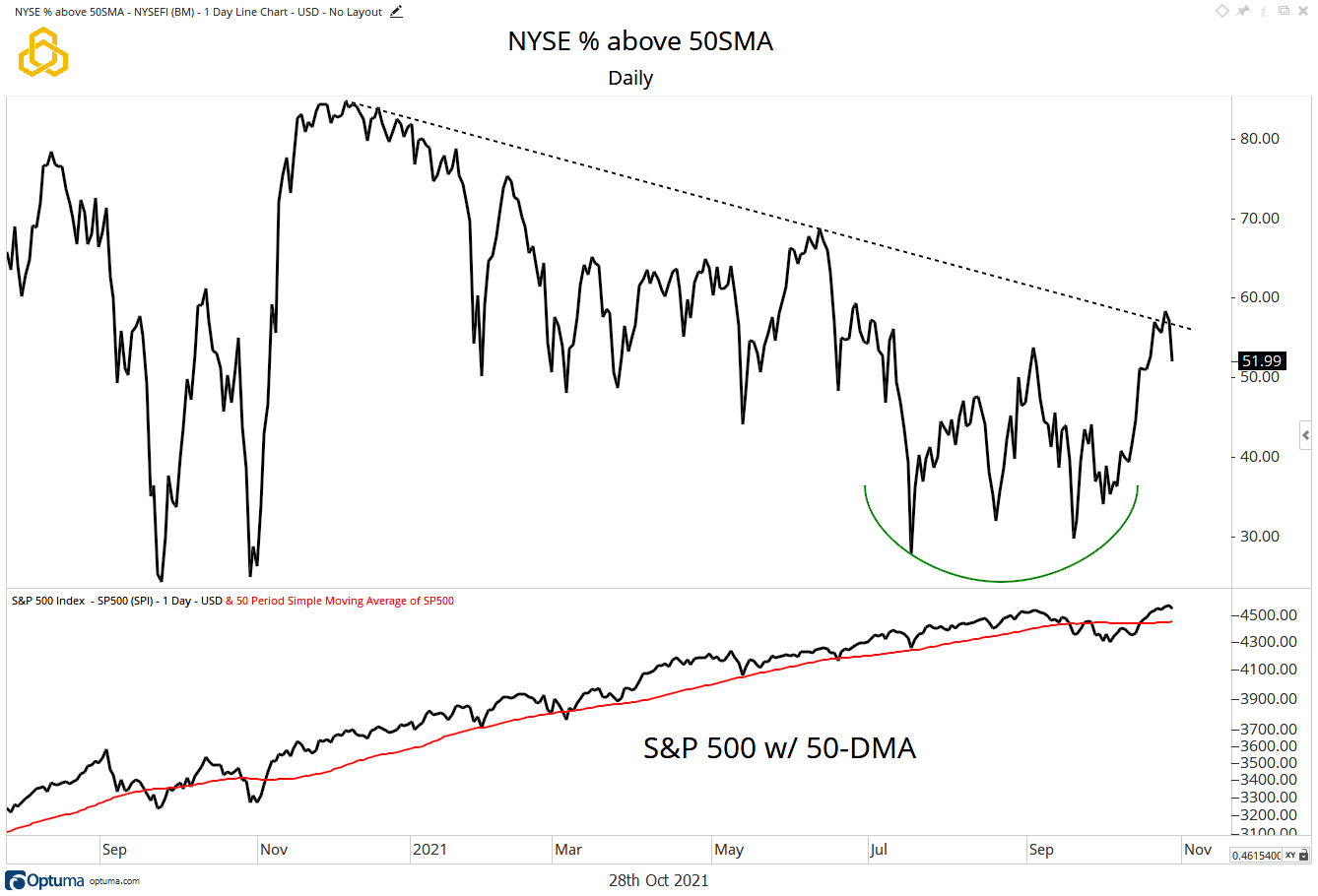
The percentage of stocks trading above their respective 20-day moving averages moved lower on the week, from 68% to 57%. Here too, the downtrend line has acted as near-term resistance that bulls want to see overcome quickly. The S&P 500 remains above its own 20-day moving average, keeping the short-term trend to the upside.
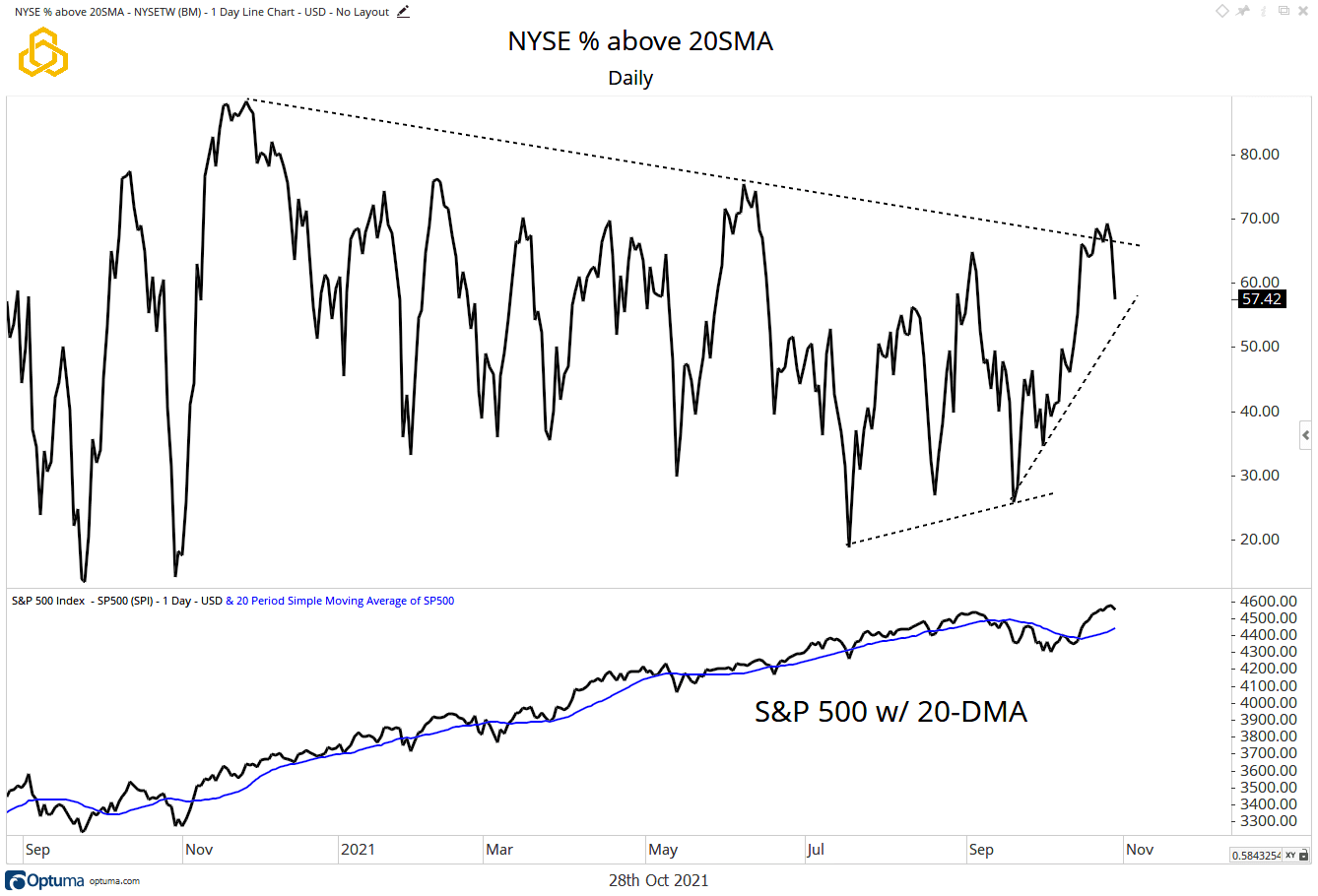
S&P 500 Breadth
Breadth metrics for the S&P 500 have weakened over the past week:
- Advance/Decline Line: Above the 50-day moving average, fading from resistance.
- Percent Above Their 200-Day Moving Average: 69% from 74% last week, trying to make the turn.
- Percent Above Their 50-Day Moving Average: 56% from 63% last week, still needs a higher high.
- Percent Above Their 20-Day Moving Average: 65% from 83% last week, fading from resistance.
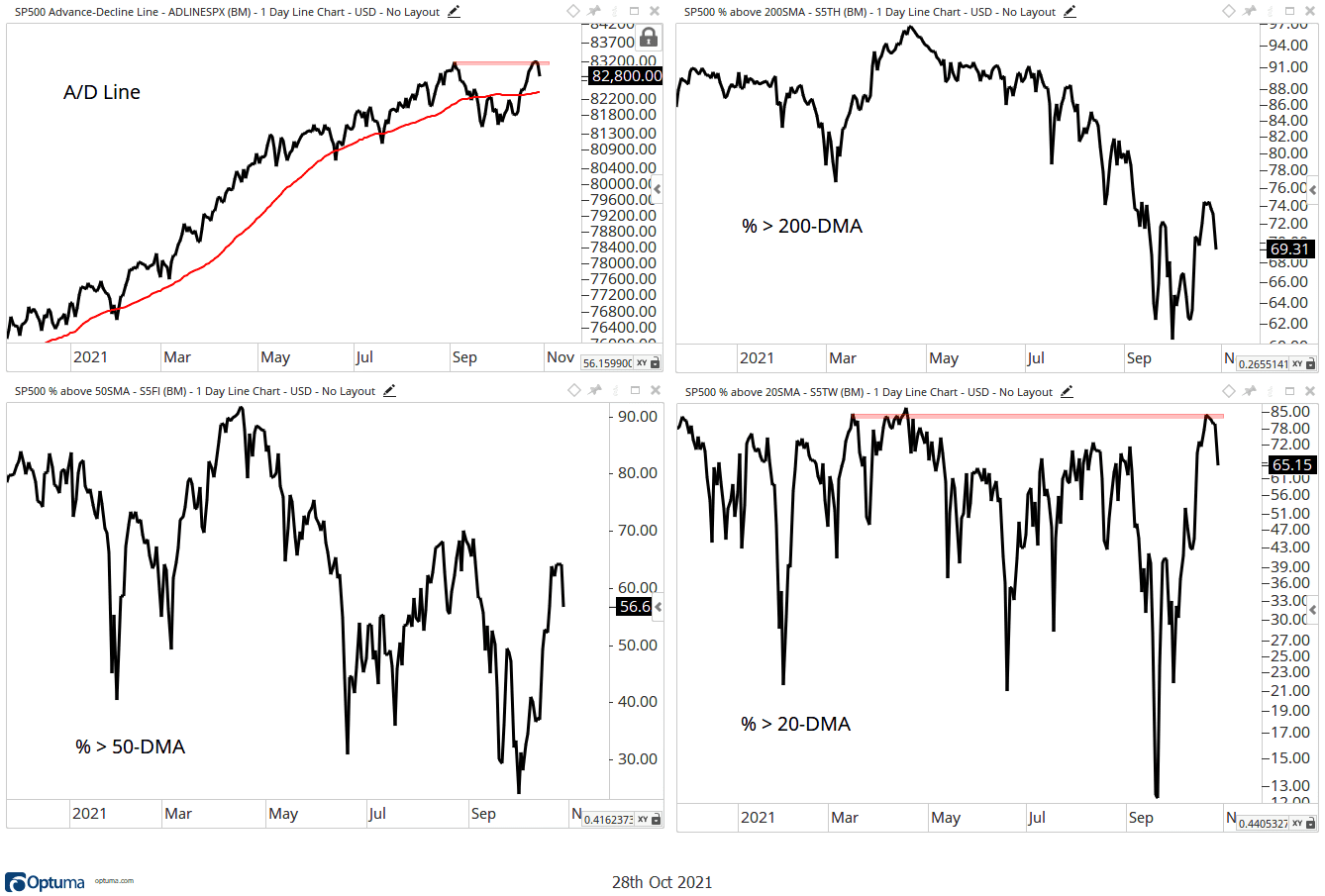
SmallCap Breadth
Breadth metrics for the S&P 600 Small Cap Index also weakened on the week. In all cases, we want to see this weakness produce a higher low:
- Advance/Decline Line: Checks back to the 50-day moving average and the broken trend line.
- Percent Above Their 200-Day Moving Average: 48% from 55% last week.
- Percent Above Their 50-Day Moving Average: 49% from 61% last week.
- Percent Above Their 20-Day Moving Average: 39% from 67% last week.
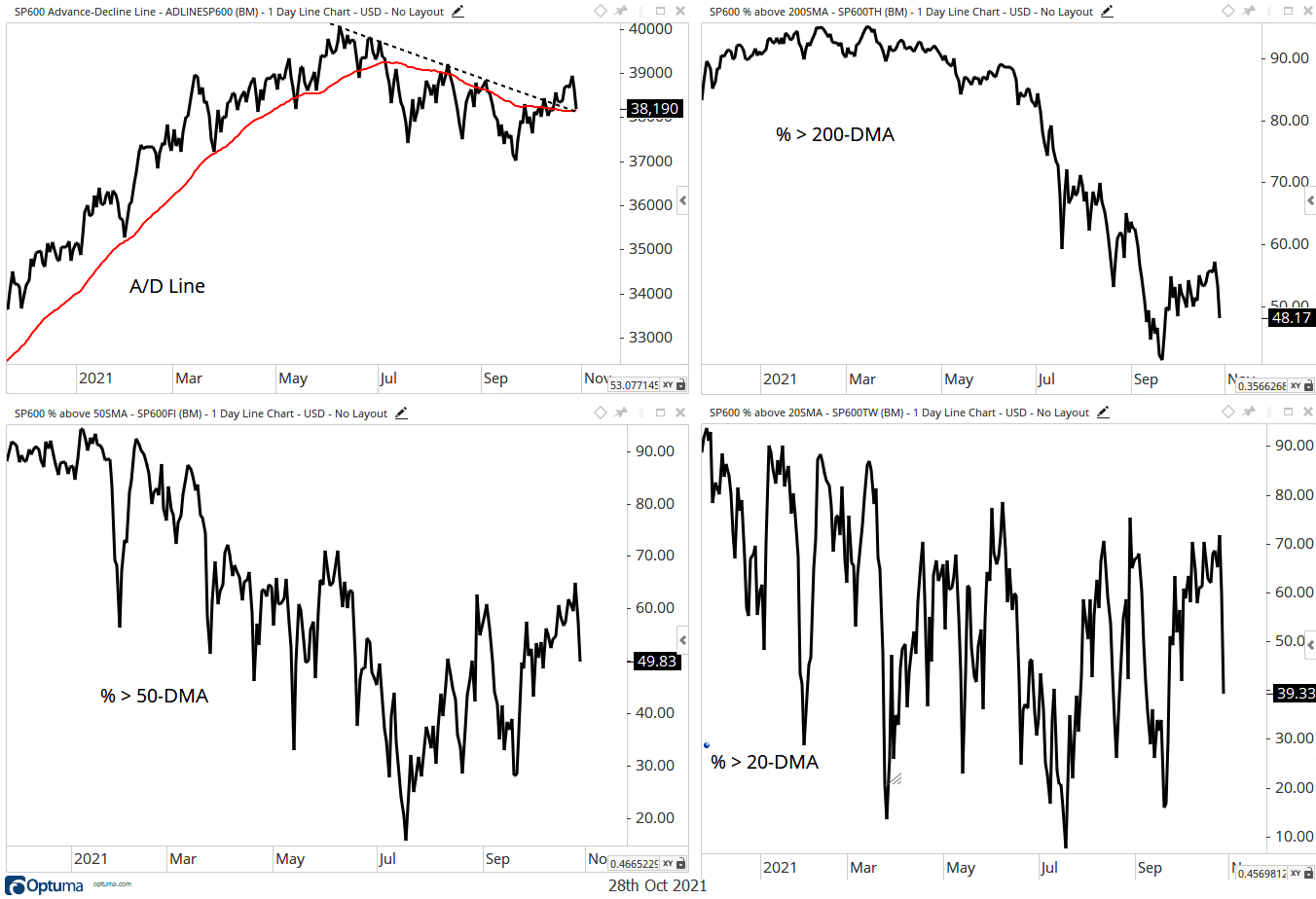
Take-Aways:
Breadth metrics have bent but have not broken over the past week. We continue to be encouraged by the lack of a build up in new lows on the NYSE that would normally precede a meaningful drawdown in equity market. At the same time, there are early signs of a reversal in the Advance/Decline line for the NASDAQ Composite as well as the percentage of stocks on the NYSE trading above their respective 200-day moving averages. Until there are signs that breadth metrics are breaking, we stick with the view that we have had for the past few weeks, breadth is improving.
Disclosure: This information is prepared for general information only and should not be considered as individual investment advice nor as a solicitation to buy or offer to sell any securities. This material does not constitute any representation as to the suitability or appropriateness of any investment advisory program or security. Please visit our FULL DISCLOSURE page.
